Is there a simple way to get a more customizable tab bar view using SwiftUI? I'm mainly asking from the perspective of macOS (though one that works on any system would be ideal), because the macOS implementation of the standard one has various issues:
- It has a rounded border around it, which means it looks awful with any sort of background color in the subviews.
- It doesn't support tab icons.
- It's very limited in terms of customization.
- It's buggy (sometimes it doesn't switch views as expected).
- It's pretty dated-looking.
Current code:
import SwiftUI
struct SimpleTabView: View {
@State private var selection = 0
var body: some View {
TabView(selection: $selection) {
HStack {
Spacer()
VStack {
Spacer()
Text("First Tab!")
Spacer()
}
Spacer()
}
.background(Color.blue)
.tabItem {
VStack {
Image("icons.general.home")
Text("Tab 1")
}
}
.tag(0)
HStack {
Spacer()
VStack {
Spacer()
Text("Second Tab!")
Spacer()
}
Spacer()
}
.background(Color.red)
.tabItem {
VStack {
Image("icons.general.list")
Text("Tab 2")
}
}
.tag(1)
HStack {
Spacer()
VStack {
Spacer()
Text("Third Tab!")
Spacer()
}
Spacer()
}
.background(Color.yellow)
.frame(maxWidth: .infinity, maxHeight: .infinity)
.tabItem {
VStack {
Image("icons.general.cog")
Text("Tab 3")
}
}
.tag(2)
}
}
}


